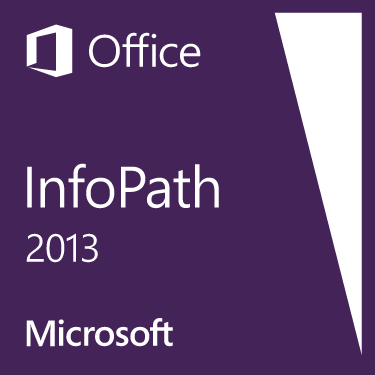It was nightmare installing SP2013 on Windows Server 2012 R2 especially with your PreRequisitesInstaller not working in Windows Server 2012 R2.
Found this article which saved the day.
Something really stupid, but worth changing.
Happy Sharing!
It was nightmare installing SP2013 on Windows Server 2012 R2 especially with your PreRequisitesInstaller not working in Windows Server 2012 R2.
Found this article which saved the day.
Something really stupid, but worth changing.
Happy Sharing!

Very often we start talking about SharePoint with a customer or organization and the obvious point we discuss is about their intranet portal. Different organizations have different visualization and vision towards their intranet portal, however it becomes confusing to decide where to start and what is must? I have met customers which on the contrary were very clear about what they want their Intranet Portal to do, and I figured out typically every SharePoint portal must have following to start with
Courtesy: Made with iMindMap 7
The key in drafting such a mind map for ones intranet portal is to have a holistic view of all the requirements and requirements being clearly classified into “must have” and “Good to have”.
Happy sharing!

I totally agree when someone says that SharePoint is not a ready-to-sale display picture it is rather a canvas, that requires an artist to put imaginations into their real forms. But, never the less we are often in a situation which requires us to start the discussion on SharePoint probably with those who either don’t know about it or knows a bit. Now, with the later case (i.e. people knowing a bit about SharePoint) there is always a case “Half knowledge is dangerous”, so beware.
SharePoint is a portal platform. And portals are different then sites, in the way that portals allows you to contribute or update data or information on your site easily and effectively. For instance you can ask your Leave Management System to update the data on your intranet site for all the employees and individuals without your constant intervention or ask your sales management system to provide the updated sales pipeline every single day on your intranet site or ask your portfolio management system to provide portfolio information every day on your public facing site.
With SharePoint possibilities are enormous, the only limit is imagination.
I know the pitch sounds WOW! but, trust me this is not even a bit about SharePoint and its capabilities that we have talked about but you have got what you wanted ![]() an invite for a detailed discussion, that is what the elevator pitch is meant to be after-all.
an invite for a detailed discussion, that is what the elevator pitch is meant to be after-all.
SharePoint is a collaboration platform. With collaboration I mean you can build an enterprise grade collaboration where people can store, share and manage enterprise content in form of documents, media, images, thoughts, comments, reviews, etc. within the enterprise and with external people in a secured way. SharePoint supports blogs, wikis, document libraries, workspaces, record center, audit trial reports, dashboards, business intelligence reports and KPIs, Workflow based business process automations, integrations to harmonize data across various systems, public facing websites, and off-course visualize data on maps, graphs, charts, etc.
Bring business together with SharePoint.
This is based on my understanding of features being added\upgraded in SharePoint 2010, I saw that Microsoft is investing in the product but there is a long way to go.
If you can’t think of business without people then the way to connect them is SharePoint. SharePoint is capable of making your people connect, share ideas, views, opinions, comments; SharePoint is enterprise social. Connect your SharePoint with Yammer to bring in collective intelligence and insight to your business; Connect your SharePoint with Project Server to bring in projects insight; Connect your SharePoint with CRM to bring in customer and market insight; Connect your SharePoint to cloud and bring your people, customers and partners together.
SharePoint is Enterprise Social are you?
Trust me, with every new version of SharePoint your pitch will get better and better, what matters end of the day is how your customer’s can get benefitted out of it.
Happy sharing and selling!

It’s not hard to get into a situation where you are asked as SharePoint implementer to integrate SharePoint with IMAP/POP3 based SMTP servers (and I am assuming except Exchange). The challenge is we as developer’s know its possible but how?
Post Office Protocol version 3 (POP3) is a standard mail protocol used to receive emails from a remote server to a local email client. POP3 allows you to download email messages on your local computer and read them even when you are offline.
Internet Message Access Protocol (IMAP) is a protocol for e-mail retrieval and storage developed by Mark Crispin in 1986 at Stanford University as an alternative to POP.
Courtesy: SiteGround
I am taking Gmail for instance as my IMAP/POP3 based SMTP service provider
Step wise
1. On your Windows Server machine, enable the SMTP server role
2. Open IIS, and right click on SMTP Server and Properties
3. Provide your FQDN when asked, provide appropriate values to other settings (Refer to link)
4. Once done in IIS, open your SharePoint CA (Central Administration)
5. Provide outbound SMTP server as your FQDN entry as mentioned while configuring SMTP server
6. Provide other details appropriately and WOLA!
It’s pretty straight forward and works great.
Reference Link for above Process
Courtesy: Technet
Follow this link for reference
Courtesy: SPJeff
Happy sharing!

Though 2010 is old now, there are organizations still using it with all the love, and we (administrators) have to manage, maintain and many a times also configure the farm for SharePoint 2010. Here is a small article from me about using psconfig (famous command line alternative of SharePoint Configuration Wizard) to connect to existing SharePoint DB.
Courtesy: This article is on request by Shrikant (one of my old colleague)
In SharePoint 2010 Products, you can use the Psconfig command-line tool as an alternative interface to perform several operations that control how SharePoint 2010 Products are configured. You must be a member of the Administrators group on the local computer to perform these operations.
Courtesy: Microsoft Technet
How to use psconfig to connect to existing SQL Server Database?
psconfig.exe -cmd configdb -create -server <Server_name> -database <Database_name>
-dbuser <DOMAIN\username> -dbpassword <password>
-user <DOMAIN\username> -password <password>
-addomain <domain_name> -adorgunit <org_unit>
-admincontentdatabase <Database_name>
psconfig.exe -cmd configdb -disconnect
psconfig.exe -cmd configdb -connect -server <Server_name> -database <Database_name>
-dbuser <DOMAIN\username> -dbpassword <password>
Courtesy: Microsoft Technet
Happy sharing!

Few months back with the news of InfoPath being officially declared closed by Microsoft, there was too much panic among the enterprises and businesses, trust me many of them even didn’t used it all. But something officially declared closed is a big news.
So, lets see where are you even if you have heavily invested in InfoPath forms on SharePoint now; Even if InfoPath is officially declared closed, it’s only for stopping any new versions for InfoPath, the 2013 version would still be supported till 2023. The bigger question is what’s next?
Frankly, there are no plans committed yet for what would be future of forms in SharePoint after InfoPath, but there are some informal development in this area.
Courtesy: The future of Forms with SharePoint and Office 365
Happy sharing!
If you haven’t heard about Platinum and Tahoe in SharePoint then, trust me you know nothing about SharePoint’s origin ![]() . Yes, but also you are not alone there are many who know much about SharePoint but its history. SharePoint has it’s root from Site Server and Site Server Commerce Edition, way back in 1996.
. Yes, but also you are not alone there are many who know much about SharePoint but its history. SharePoint has it’s root from Site Server and Site Server Commerce Edition, way back in 1996.
For more information read this article by JoiningDots
Happy sharing!
Understanding right licensing for all the Microsoft server products have always been a tough time for me. Let’s check what are the various scenarios you need to deal with while thinking of a solution on SharePoint and how to refer to appropriate licensing that is applicable for the proposed solution.
Courtesy: Volume Licensing Brief, Microsoft
According to the diagram above, in case of Intranet scenario, SharePoint Server License is required per instance (meaning for each server that is running SharePoint services, i.e. WFE, App, Search, BCS, SP 2013 Workflow Manager, etc…) and SharePoint CALs (i.e. Client Access License) are required for internal users only.
P.S.: Since, this is an intranet site scenario, there are not external users or entities accessing the portal.
For those who do not belong to SharePoint administration or architect background, let me tell you that any typical implementation of SharePoint is known as SharePoint Farm. Based on the customer requirements and needs these farms are broadly classified into three categories Small, Medium and Large. I haven’t heard anything like “Huge” though a Medium or Large implementations may even scale beyond single geo-location.
A SharePoint farm is a collection of SharePoint servers or SQL servers that work in concert to provide a set of basic SharePoint services that support a single site.
Courtesy: Google
Each of these multiple servers are further layered within each type of farm and broadly there are three layers viz… Web Front End server(s) or WFE or Front End layer, Application server(s) layer, and database server(s) layer.
Below figure shows a logical view of all these layers/tiers for small and medium SharePoint farm
Courtesy: TechNet
The servers drawn in grey represent adding servers to that particular layer of the farm for scaling up of the farm, adversely removing or decommissioning of servers from a layer means scaling down of the farm.
Visualizing this way, now you know if you are responsible for managing infrastructure for Payroll application developed on SharePoint, you might want to scale-up the infrastructure during the critical period (like end of month) and again scale-down during rest of the time in the month.
Happy sharing!
PKI as it stands for Public Key Infrastructure is a very well known term when it comes to system security. Functioning of a typical PKI infrastructure is fairly simple and straight forward as it is depicted

Courtesy: Wikipedia
As far as SharePoint is concerned (and I am talking about 2013), PKI is something that is not of much concern as SharePoint supports PKI inherently and all that is required is SSL in place. However, the difficult part is to design and plan such a thing in real world with SP 2013.
No, don’t take me wrong, this article does not describe end-to-end implementation, however it does cover a significant part of the solution. So, lets start by making the ground ready
Refer to this systematic guide for reference.
I will be updating or writing a new article about what other information can be embedded within the certificate or token so that integration possibilities increase and are managed using the same PKI infrastructure itself.
There is nothing critical required for SharePoint. It generates its own internal certificates/keys for internal usage. The only thing you would apply is for SSL certificates (2048 bit is fine) and trusted certificates.
Courtesy: TechNet
Happy sharing!